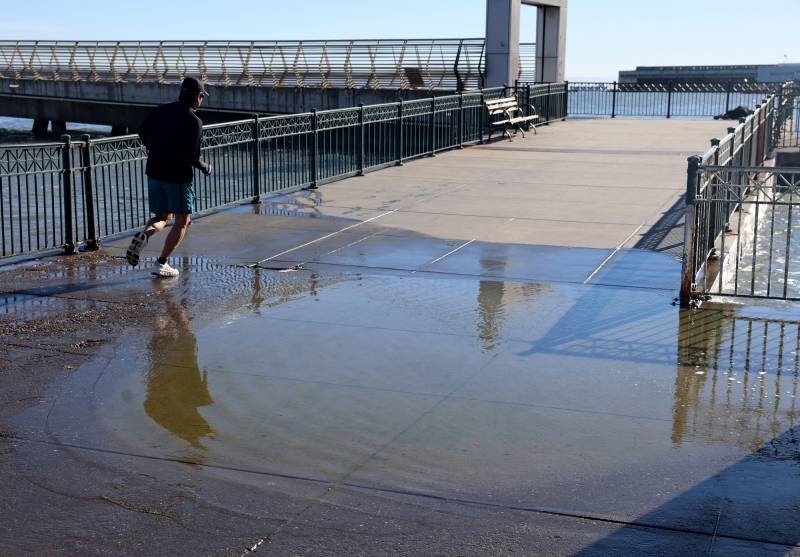Updated 12:52 p.m. Friday
The Bay Area’s first king tide of the season will make an appearance this weekend, prompting advisories for flooding and high surf around the bay and up and down the coast.
“King tide” is not a scientific term but a popular one used to describe very high tides followed by very low tides that occur during a new or full moon. In the Bay Area, they occur a couple of times per year, washing up on San Francisco’s Embarcadero and other low-lying spots across the region.
In San Francisco, the king tide will be at its most extreme on Saturday, when the National Oceanic and Atmospheric Administration forecasts the high tide will be 7.01 feet at 10:43 a.m., and the low tide will drop down to -1.51 feet at 5:38 p.m.
The high tides are expected to last through Sunday and could bring flooding to schools, parks, sidewalks and roads along the shoreline.


